
MSU Extension programs improve animal health
DOWNLOADSeptember 5, 2023 - Michigan State University Extension
Impacts
- MSU Extension serves the animal agriculture industry by engaging in research, education and outreach that enhances the quality of life for residents throughout the state.
- MSU Extension’s agriculture production efforts strive to engage the industry by continuously improving the animal care and well-being knowledge of farmers, which will in turn enhance food safety and food production methods.
- Through dedicated preparedness planning, MSU Extension engages with farmers to best prepare them for impactful animal health issues, working to provide business continuity for farms when faced with a disease outbreak.
- 805,000 jobs relate to the animal agriculture industry in Michigan (Michigan.gov.,n.d.).
- Over 47,000 livestock and crop farms are in Michigan. (Michigan.gov., n.d.).
- Over 26,000 people attended programs offered by the MSU Extension animal agriculture team.
- 125 animal agriculture partnerships were created between MSU Extension and Michigan organizations.
Michigan. gov. (n.d.). Facts about Michigan agriculture.
Priority Areas
Agriculture contributes more than $104.7 billion annually to our state’s economy (Michigan.gov., n.d.). Michigan State University (MSU) Extension provides valuable services, programs and information for Michigan’s animal agriculture industry by engaging in research, education and outreach that addresses animal health concerns directly on the farm. MSU Extension focuses on areas that directly influence animal health issues so that farmers can continue daily operations while safely feeding the world’s population.
"MSU is an important partner and voice in the industry." -Kara Henrys, Michigan Veterinary Medical Association director of member services
For additional information on animal health, visit www.canr.msu.edu/animal-agriculture/.
FARMERS & FIELD PARTNERS PREPARE & TRAIN FOR FOREIGN ANIMAL DISEASE
Overview
Farmers manage risk by employing management strategies that optimize animal health and protect them from disease outbreak. With so many unknowns, determining what risk to address can often become a guessing game. Producers must be proactive and aware when protecting their herds from highly contagious or foreign animal diseases (FAD), which are the major components of the Secure Pork Supply (SPS) plan and the U.S. Swine Health Improvement Plan (USSHIP). Minimizing economic disruption and distress due to a FAD outbreak is the goal of the agriculture industry, from the United States Department of Agriculture (USDA) to the farmers to those packaging products for sale.
To manage risk, the best defense is early identification, which allows for strategic disease eradication. This requires strong synergies across the animal agriculture system, including first line personnel such as farmers and field partners. Field partners include veterinarians, veterinary students, and butchers and processors who serve the animal agriculture industry by supporting the food supply chain. With the confirmation of African Swine Fever (ASF) in China and continued spread across Asia and Europe, farmers and field partners are on heightened alert for ASF entering the United States.
Training Modules
Teaching the signs and symptoms of prevalent FADs to farmers and field partners involved in pork production was the focus of Dr. Madonna Benjamin, MSU Extension swine veterinarian. Funding from the Michigan Animal Health Fund was used to create two online modules for field partners that focused on identifying the signs and symptoms of prevalent FADs. The modules are available via the MSU D2L platform for MSU and non-MSU trainees. Participants receive a certificate of completion.
These modules depict various signs and symptoms of FADs though antemortem and postmortem imaging. They also share information on reporting suspected FADs to the state. The modules were developed with input from the USDA, the Michigan Pork Producers Association, the MSU Veterinary Diagnostic Lab and the Michigan Department of Agriculture and Rural Development (MDARD). Ohio and Indiana state officials have requested the modules so they can adapt them to their response planning. Additionally, the team developed a splash-proof poster highlighting the signs and symptoms of ASF for butchers and processors, including what would be seen during postmortem inspection at processing facilities. Posters in English and Spanish are available.
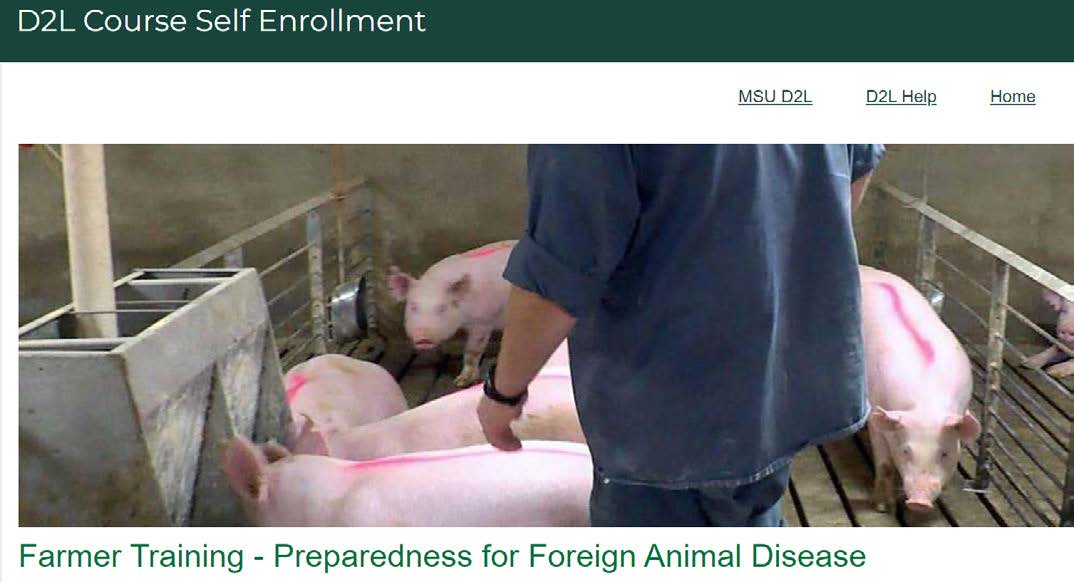
The modules and poster support FAD identification by butchers and processors. With over 300 custom exempt processors and 16 USDA–inspected plants in Michigan, early identification of a FAD greatly increases when a sector of the industry is trained. A specific organ pathology, indicative to FAD, may be one of the first indications of its entry into the United States. With training of field partners focused on organ pathology, the chances of early identification of a FAD is increased. It potentially allows for immediate eradication of a devastating disease.
If MDARD detects a FAD such as ASF in Michigan, farmers would be required to take additional steps to move their animals. This system of permitted movement would require verification from an accredited veterinarian, with a required farm site visit and an affidavit of the farm’s enhanced biosecurity plan prior to animal movement from the farm site. While over 1,700 accredited veterinarians practice in Michigan, only a few are trained in enhanced biosecurity. The shortage is especially concerning when contrasted against the need of over 2,000 pig farms in Michigan. Veterinarians interested in providing this service can utilize the created modules to enhance their knowledge of FAD detection, allowing them to make informed decisions on the health of animals awaiting movement.
Should a FAD outbreak occur in Michigan, the animal agriculture and associated industries must work toward a state of preparedness. With concerns of ASF as well as the further development of the SPS plan and enrollment in the USSHIP, the development of educational resources to assist swine farmers and their field partners including veterinarians, butchers and processors in the early identification of FADs is important. Information on regulatory processes including how to recognize, report and meet mandated expectations must be shared among the veterinarians supporting farmers. Efforts supported by MSU Extension will help better equip Michigan’s animal agriculture industry to both prevent and respond to a highly contagious disease or FAD outbreak.
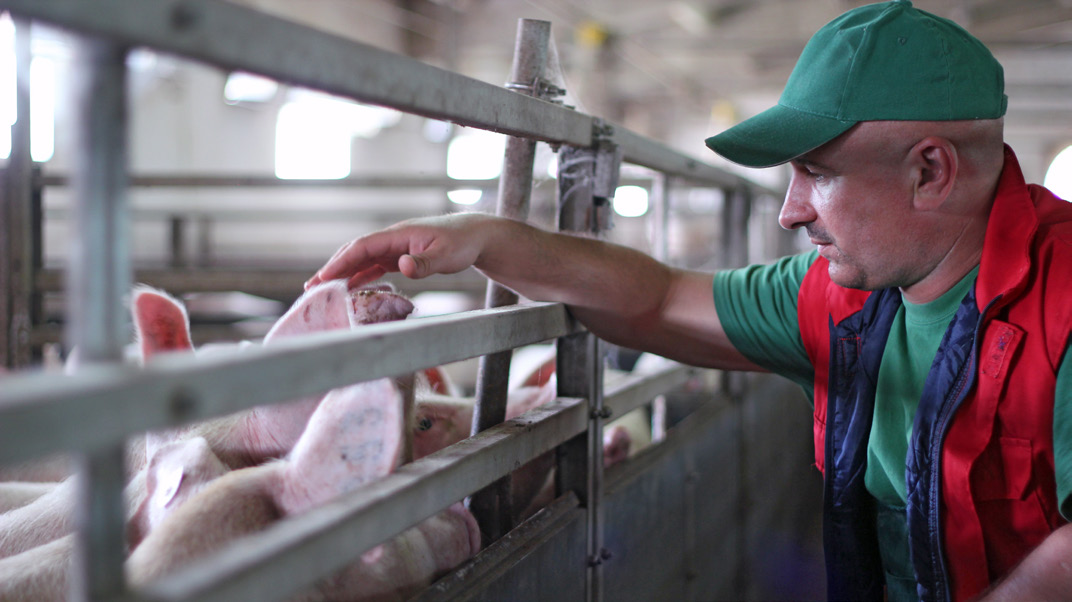
- 2,691 pig farms in Michigan will be better prepared for business continuity in the case of FAD because of SPS.
- 300 custom butchers and processors will be able to identify the signs of ASF leading to rapid identification and response if an outbreak were to occur.
- 16 USDA-certified processors received training materials to educate their employees.
EXTENSION EDUCATORS FOCUS ON PARASITE ISSUES AFFECTING MICHIGAN FARMS
Farmers manage numerous animal health challenges when raising livestock and many can be addressed by mitigating the risk. One frequently occurring health challenge in animal populations is parasite infection. Parasitic diseases in animals impair reproduction, growth, productivity and overall health of infected animals. If the infection is not treated, death can occur.
While farmers can easily address parasite infections by implementing management plans, they frequently mismanage this issue. For example, in 2022 higher than usual parasite infection rates occurred on some Michigan farms in the spring and early summer following extremely warm and wet field conditions in May and June. To address the situation, MSU Extension educators conducted educational programs and worked directly with farmers.
Parasite infections remain one of the biggest challenges for Michigan farmers who raise small ruminants. Sheep and goats are typically grown on pasture that provides access to parasite populations, and there is a growing and widespread resistance to dewormers. This situation creates a need for information on alternative and integrated parasite control practices. MSU Extension educators designed a virtual educational program to help participants manage parasites in their herds or flocks and teach them practices that would help slow the development of treatment-resistant parasites. This virtual program offered new methods of monitoring animals for parasite infection and helped build disease management skills.
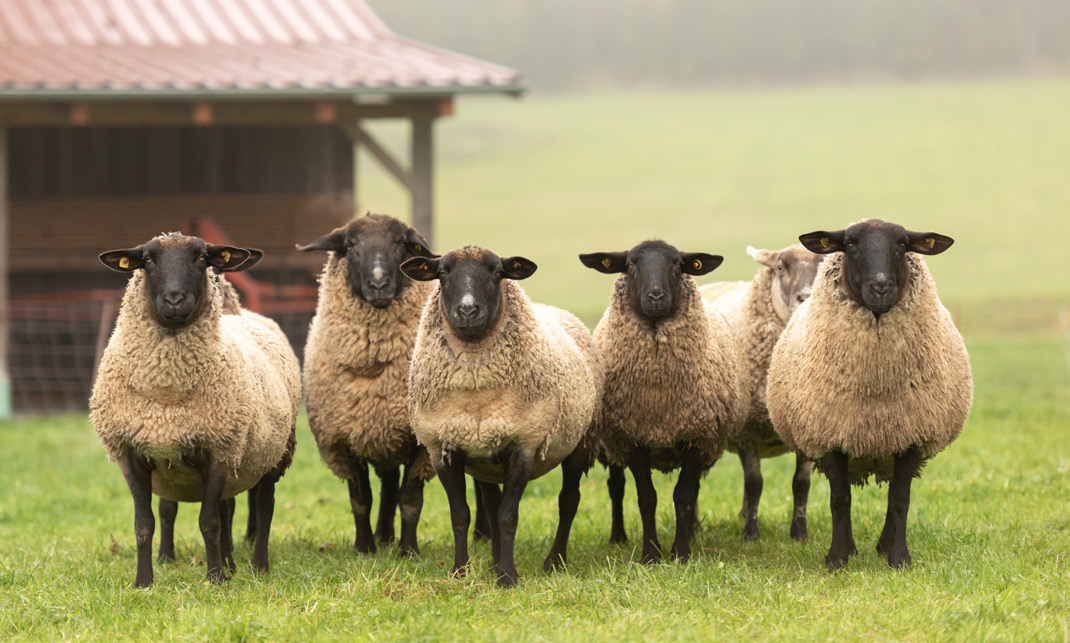
When parasite problems are not recognized or managed properly, they become a major health issue for a farm operation. In early August 2022, a farm contacted the MSU Extension pork team and reported that almost all the pigs in their pasture-raised herd were suffering from extreme diarrhea. Some animals had already died and several others were emaciated and near death. Circumstances like this are extremely rare for farms, and the pork team needed to take quick action. The team worked in partnership with the MSU Veterinary Diagnostic Laboratory to get answers, which resulted in the development of a plan of action for the farm.
As the MSU Extension team and the farmer worked through this issue, the team instructed the farmer to collect fecal samples for testing. The collected samples showed high levels of two gastrointestinal nematodes, Ascaris and Trichuris, known to cause significant sickness if left untreated. The team instructed the farmer to administer an anthelmintic (deworming medication) known to be effective against these nematodes. Though some improvement in pig health occurred, most pigs continued to show signs of parasite infection or reinfection, which was confirmed by necropsy at the MSU Veterinary Diagnostic Laboratory.
The MSU Extension pork team remained in close contact with the farmer and obtained a small grant to pay for additional fecal testing on seven pigs and necropsy of two additional animals. These tests showed that most pigs were still infected by these nematodes. A different anthelmintic was recommended by MSU Extension veterinarians and field educators, and a full course of the drug was administered by the farmer. This round of treatment prevented additional pigs from dying and allowed the farmer to fill most of the farm’s orders for pork in mid-September. Members of the MSU Extension pork team visited the farm in late September, and based on visual observations and discussions with the farmer, recommended several specific actions that will reduce pig exposure to parasites in contaminated pastures and help prevent another outbreak of these and other parasites during the 2023 season. The farmer expressed a willingness to implement each of the recommended actions.
Being able to provide transformational information for agricultural commodities such as the hog industry, groups of farmers or individual farmers is the goal of MSU Extension. Having resources that meet the needs of farmers on all these levels is a major focus of the animal agriculture team. Whether it is educating on pertinent topics to groups of farmers or addressing the needs of specific operations, MSU Extension educators focus on meeting the needs of their clients and improving the health of the animal agriculture industry in Michigan.
- 90% of program participants gained skills in new methods for monitoring animals for parasite infection.
- 34 Michigan counties, 5 U.S. states and 2 foreign countries had participants who accessed programming focusing on parasite management.
MSU RESEARCHERS LOOK FOR SOLUTIONS TO PINKEYE IN CATTLE
For the cattle industry, a major challenge includes infectious bovine keratoconjunctivitis (IBK), commonly known as pinkeye. This common infection is known to cause pain and weight loss in dairy and beef calves. While the mechanisms that cause pinkeye are unclear, scientists know that the bacteria Moraxella bovis is involved.
Pinkeye has historically been a neglected disease in cattle compared to other more high-profile diseases such as bovine respiratory disease. In the past decade, animal health researchers have increased efforts to learn about the causes and prevention of pinkeye (Funk et al., 2009). Dr. Annette O’Connor, from the Department of Clinical Sciences in the MSU College of Veterinary Medicine, has focused her efforts on increasing farmer understanding of pinkeye in cattle (Burns & O'Conner, 2008). O’Connor conducted clinical trials to identify if the available pinkeye vaccines were effective when applied on farms.
Clinical trials repeatedly showed that neither autogenous nor commercial vaccines were effective at preventing pinkeye. A major limitation of the clinical trials was that they were all conducted in a single herd. However, in recent years, other animal health researchers from Nebraska (Cullen et al., 2017) and Australia (Hille et al., 2022) have failed to find supporting evidence in favor of the currently available pinkeye vaccines. As a result of this work, new research focuses on using modern vaccine technologies to develop effective vaccines, a message MSU Extension educators have relayed to farmers. The work to develop effective vaccines continues with the hope that new technologies will aid in a solution that will eventually prevent outbreaks of this disease.
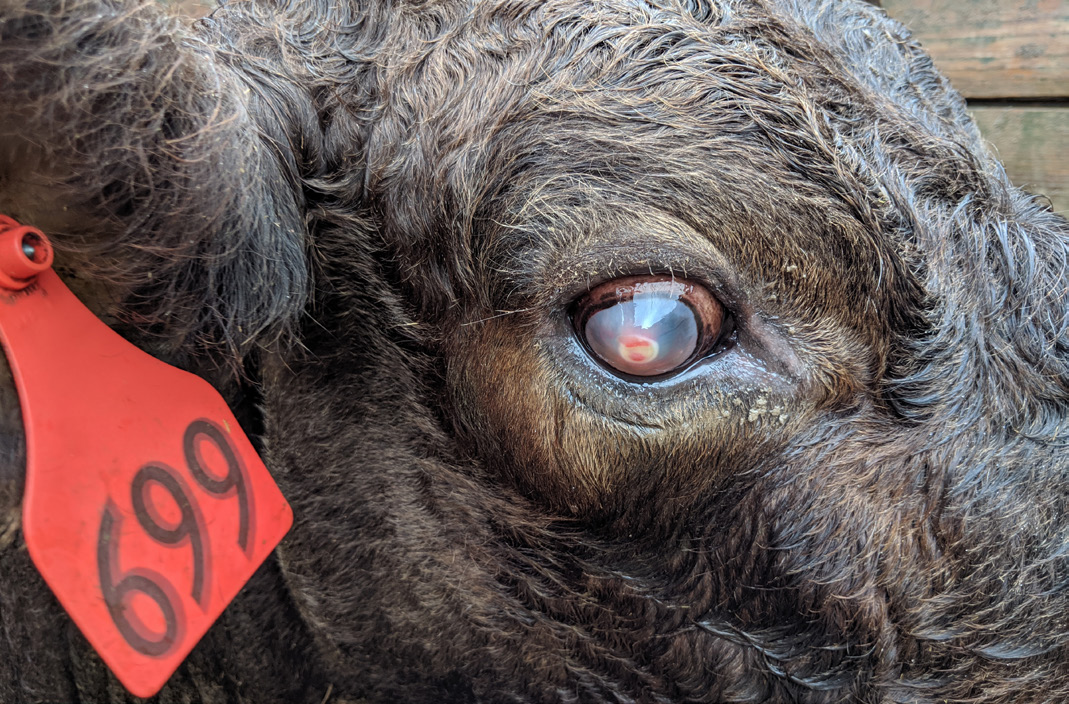
References
Burns, M. J., & O'Connor, A. M. (2008). Assessment of methodological quality and sources of variation in the magnitude of vaccine efficacy: A systematic review of studies from 1960 to 2005 reporting immunization with Moraxella bovis vaccines in young cattle. Vaccine, 26(2), 144-52. doi: 10.1016/j.vaccine.2007.10.014
Cullen, J. N., Engelken, T. J., Cooper, V., & O'Connor, A. M. (2017). Randomized blinded controlled trial to assess the association between a commercial vaccine against Moraxella bovis and the cumulative incidence of infectious bovine keratoconjunctivitis in beef calves. Journal of the American Veterinary Medical Association, 251(3), 345-351. doi: 10.2460/javma.251.3.345
Funk, L., O'Connor, A. M., Maroney, M., Engelken, T., Cooper, V. L. , Kinyon, J., & Plummer, P. (2009). A randomized and blinded field trial to assess the efficacy of an autogenous vaccine to prevent naturally occurring infectious bovine keratoconjunctivis (IBK) in beef calves. Vaccine, 23;27(34), 4585-90. doi: 10.1016/j. vaccine.2009.05.082
Hille, M. M., Spangler, M. L., Clawson, M. L., Heath, K. D., Vu, H. L. X., Rogers, R. E. S., & Loy, J. D. (2022). A five year randomized controlled trial to assess the efficacy and antibody responses to a commercial and autogenous vaccine for the prevention of infectious bovine keratoconjunctivitis. Vaccines (Basel), 10(6), 916. doi: 10.3390/vaccines10060916
EDUCATIONAL OPPORTUNITIES HELP FARMERS WITH BIRTH MANAGEMENT SKILLS
A successful livestock operation requires management and production skills in health, nutrition and animal well-being. Understanding how to care for newborn animals and their mothers after they are bred makes animals more productive and creates better efficiencies for the farm.
The MSU Extension small ruminant team offered a Small Ruminant Birth Management program in 2022 via Zoom with an optional corresponding session at the MSU Sheep Farm. Led by industry experts from MSU, the program taught topics such as paring sheep or goats for breeding, pregnancy management, late pregnancy nutrition, potential delivery issues, newborn care and management, and lactation. The information shared was especially beneficial to beginning farmers by introducing them to birthing concepts. It also provided experienced farmers with information on new practices and technologies that could help them better manage their flocks and herds.
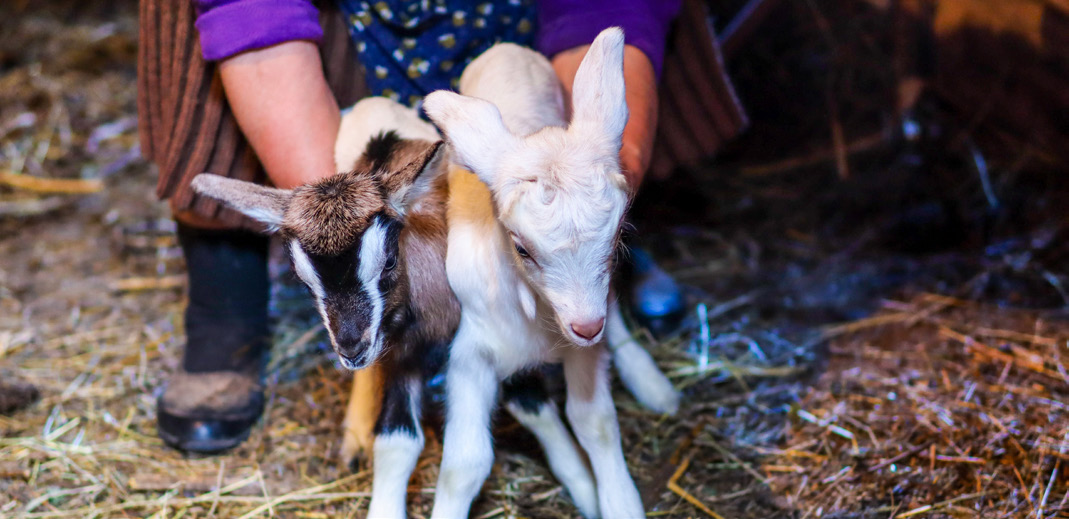
The MSU Extension small ruminant team shared knowledge with participants from Michigan, 13 states and Canada. This program received an overwhelmingly positive response from those who attended. By providing birth management information and resources, farmers experience productivity and efficiency improvements in their flocks and herds, which results in increased farm sustainability.
Program attendees represented:
- 38 Michigan counties
- 13 States
- 2 Countries
- 87% of program attendees can better assist small ruminants with the birthing process if needed.
"Thank you so much for taking the time to do this program. It was worth every minute of my time and I will be implementing new practices to my flock management based on what I learned here." -Small Ruminant Birth Management program participant
MOVING TO ZERO BOVINE LEUKOSIS VIRUS
Animal health issues negatively affect a farm’s bottom line. Managing herd health by using veterinary recommendations, identifying serious health issues that impact productivity or the value of the animal and implementing practices that negate these issues can positively impact a farm’s fiscal health.
Bovine leukosis virus (BLV) is a bloodborne disease in which the virus lives in white blood cells called lymphocytes. Cattle can be asymptomatic and carry the disease without showing clinical signs of the virus. Cattle that are symptomatic develop lymphosarcoma tumors that can become enlarged and seen under the skin.
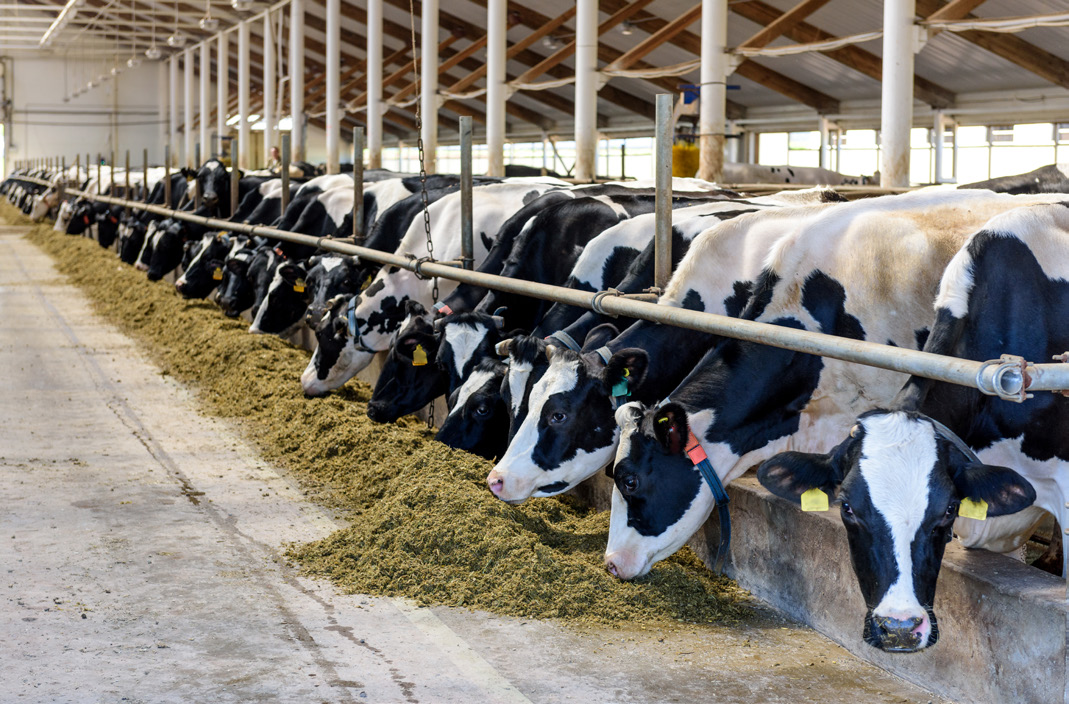
While it appears that these tumors have no effect on milk production or animal well-being, they can severely decrease carcass value. For example, a large animal processing facility in the northeast area of the U.S. that routinely processes 350,000 cattle per year condemns about 2,000 carcasses per year due to lymphosarcoma. This represents approximately half of the plant’s total condemnations. The loss of carcass value has a large economic impact for dairy farmers as a portion of their income is the value of the culled cow.
In Michigan, BLV infects more than 90% of Michigan dairy herds and a large proportion of beef cow-calf herds. In addition, the average infection rate within the herd may be approximately half of animals with some herds as high as four out of five adult animals. Michigan dairy farmers have the same concerns regarding BLV as other dairy operations in the U.S. with indirect costs including impaired immune response to both pathogens and vaccines resulting in increased clinical diseases and reduced protection from disease. Because the virus is transmissible between animals, infection rates continue to climb in herds over time. The MSU Extension dairy team’s Moving to Zero BLV project includes helping herds that had low prevalence of BLV to reduce it, with the goal of becoming BLV-free. They also worked to develop a method to monitor low-prevalence herds as a low-cost way to check for disease presence.
The team identified farms where BLV was an issue through whole-herd testing of 10 dairy herds (each averaging 241 cows) by using a milk ELISA (enzyme-linked immunosorbent assay) test to identify cows as exposed to the virus by the presence of specific antibodies. Follow-up testing of ELISA-positive cows with a PCR blood test determined the cows most at risk of spreading the virus by quantifying the provirus load. These results enabled dairy farm owners and managers to target cows either for herd removal or breeding options that would eliminate offspring from cows that could shed the virus.
All project participants with infected cows used this information to reduce the risk of BLV transmission or presence in the herd. As they did, they discovered a pathway to elimination of the virus from their herd. In addition, CentralStar Laboratory, in partnership with the project, developed and tested a low-cost bulk-tank test that proved to be sensitive in its ability to distinguish between BLV-free herds and herds with a very low (less than 3%) prevalence BLV.
By implementing these assessment protocols, farmers can better manage the health of their herds by focusing on reducing the number of animals affected by BLV. This allows them to better retain the carcass value of cull animals, improve animal well-being and focus on producing milk from high health herds. Being able to label products as produced from a BLV-free herd is also a marketing tool that can help farmers when working with co-ops and processors, ensuring market accessibility for their products.
"When you can tell the public and your consumers that your herd is free of BLV, people are going to be responsive to that in a positive way." -Moving to Zero BLV project participant
- 10 dairy farms participated in a project to reduce the number of BLV positive animals in their herds.
- 90% of dairy herds are affected by BLV.
MSU VIRTUAL EQUINE HEALTH SERIES REACHES WORLDWIDE AUDIENCE
The MSU Extension equine team collaborated with the MSU College of Veterinary Medicine and My Horse University to offer a free, virtual Equine Health series presented by leading veterinarians and equine scientists. This virtual four-session Equine Health series was delivered to participants via the My Horse University platform as well as broadcasted on Facebook Live. The planning team selected pertinent topics for all horse owners that included “So, You Want to Breed Your Mare?” “Hoof Health, Foal Health” and “Behavioral Based Management.”
A large portion of the attendees viewed the live sessions, where they also benefited from a question-and-answer forum with the program experts. The sessions were recorded and are available online, with the MSU Extension equine team available for follow-up clarification and questions.
- 49 Michigan counties
- 26 States
- 16 Countries
Had participants who accessed equine health information from MSU Extension.
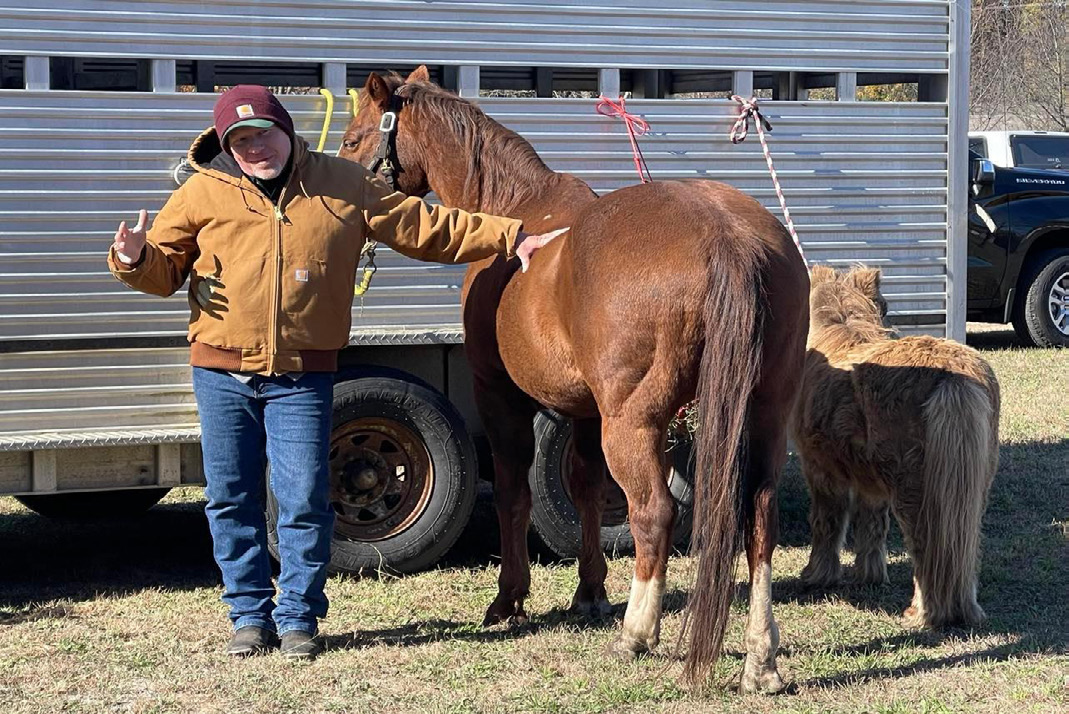



 Print
Print Email
Email